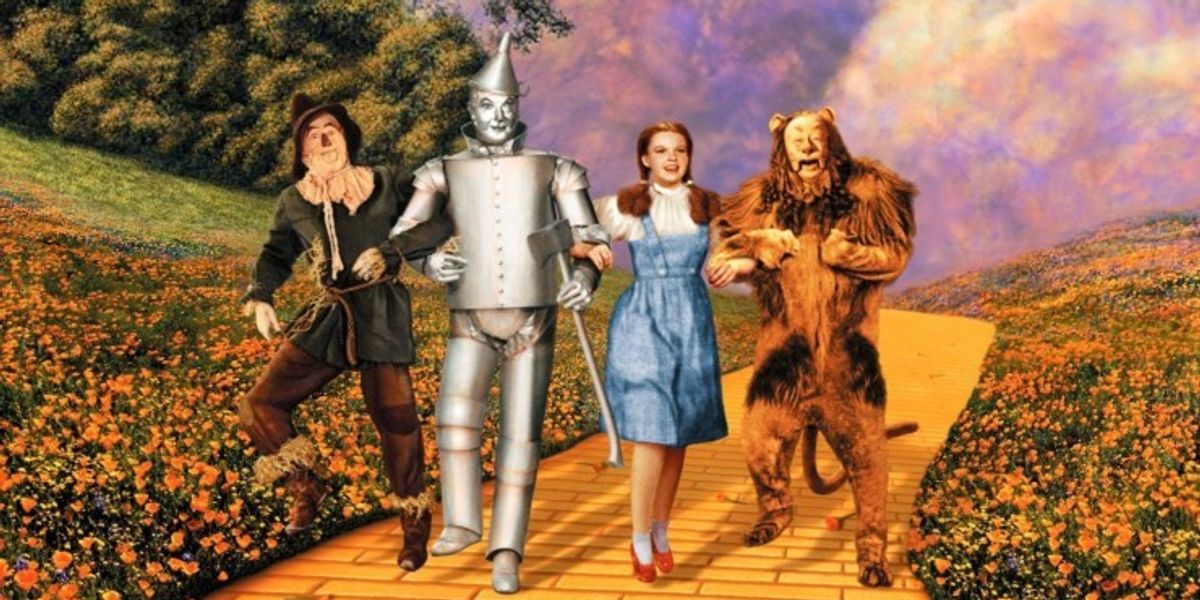
Many great stories, whether told through the written word or on the silver screen, share a common thread—a hero’s journey. The Hero’s Journey is a narrative structure that has been a fundamental part of storytelling for centuries, and it continues to be a powerful tool in filmmaking.
One of my favorite screenwriting books is ‘The Writer’s Journey‘, which details Joseph Campbell’s journey through storytelling and takes the writer’s POV.
This was the first book I read on screenwriting and one of the best.
Christopher Vogler wrote the book, and he was recently on the Film Crux podcast talking about these concepts. So check out the podcast and we’ll talk after.
The Writer’s Journey | How to Write Great Stories | Christopher Voglerwww.youtube.com
What is the Hero’s Journey?
‘Star Wars’
CREDIT: Lucasfilm
I figured that after the podcast you may need a refresher on Joseph Campbelland his concept of The Hero’s Journey. This not a new concept; it dates back to ancient mythology and has been used by countless cultures throughout history.
Campbell was a scholar of comparative mythology and wrote a book called “The Hero with a Thousand Faces.” He identified a common pattern in myths and stories from around the world, a pattern he called the monomyth or the Hero’s Journey.
The Hero’s Journey is a template that outlines the stages a hero typically goes through in a story. While there may be variations and adaptations, the core structure remains consistent.
It begins with the hero’s ordinary world, followed by a call to adventure, a journey into the unknown, encounters with allies and enemies, a transformation or revelation, and finally, a return to the ordinary world with newfound wisdom or gifts.
A Diagram of The Hero’s Journey
The Hero’s Journey Diagram
Wikipedia Commons
The Hero’s Journey is often depicted as a circular diagram, with each stage connected to the next in a cycle. there are many different names for the story beats in the circle.
The image above is from Wikipedia.
Here’s a linear representation of Campbell’s idea with beats I use when writing.
- Ordinary World: The hero’s normal life before the adventure begins.
- Call to Adventure: The hero receives a call to leave their ordinary world and embark on a journey.
- Refusal of the Call: The hero hesitates or resists the call initially.
- Meeting the Mentor: The hero encounters a mentor or guide who provides advice or assistance.
- Crossing the Threshold: The hero commits to leaving the ordinary world and entering the unknown.
- Tests, Allies, and Enemies: The hero faces challenges, makes allies, and encounters adversaries.
- Approaching the Cave: The hero gets closer to the central challenge or conflict.
- Ordeal: The hero faces a major test, often their most significant challenge.
- Reward: The hero overcomes the ordeal and gains a reward or insight.
- The Road Back: The hero begins the journey back to the ordinary world.
- Resurrection: The hero faces one final, climactic challenge.
- Return with the Elixir: The hero returns to the ordinary world, transformed, and brings something valuable back.
Examples of The Hero’s Journey in Film
‘The Matrix’
Warner Bros.
Many iconic films have embraced the Hero’s Journey structure to great effect. Here are a few examples:
- Star Wars: George Lucas drew heavily from Joseph Campbell’s work when creating the Star Wars saga. Luke Skywalker’s journey from a farm boy on Tatooine to a Jedi Knight follows the Hero’s Journey pattern closely.
- The Lord of the Rings: J.R.R. Tolkien’s epic fantasy trilogy, adapted into films by Peter Jackson, showcases the Hero’s Journey through Frodo’s quest to destroy the One Ring.
- The Matrix: The Wachowskis used the Hero’s Journey to guide Neo’s transformation from a computer hacker to “The One” who can save humanity.
- The Wizard of Oz: Dorothy’s adventure in the Land of Oz is a classic Hero’s Journey, complete with a call to adventure, allies, adversaries, and a return home with newfound wisdom.
How Filmmakers Utilize the Hero’s Journey
- Creating Relatable Characters: One of the most significant advantages of the Hero’s Journey in filmmaking is its ability to create relatable characters. Audiences connect with heroes who face challenges, make sacrifices, and experience personal growth. By following this narrative structure, filmmakers can craft characters that resonate with viewers on a deep emotional level.
- Building Tension and Conflict: The Hero’s Journey provides a built-in framework for tension and conflict. As the hero progresses through the various stages, they encounter obstacles, adversaries, and setbacks, keeping the audience engaged and invested in the story’s outcome.
- Engaging Audiences on an Emotional Level: The Hero’s Journey is not just about physical challenges; it’s also about the hero’s internal journey. Filmmakers can use this structure to explore the hero’s emotions, fears, and desires, allowing the audience to connect with the character on an emotional level.
- Crafting Memorable Endings: The return of the hero to the ordinary world at the end of their journey often leaves a lasting impact on the audience. Filmmakers can use this moment to deliver powerful messages, resolutions, or open-ended conclusions that leave viewers thinking long after the credits roll.
More Reading on The Hero’s Journey
The Lion King (2019)
Disney
This is No Film School, of course we’ve written about this concept many times before. so here are some articles for you to peruse as well…
The Hero’s Journey is a storytelling archetype deeply embedded in our collective consciousness. It provides filmmakers with a powerful tool to engage and captivate audiences.
By understanding and utilizing this narrative structure, filmmakers can create compelling stories with relatable characters, tension, and emotional depth.
Whether you’re crafting a space opera or an intimate drama, the Hero’s Journey remains a timeless blueprint for successful storytelling in filmmaking.
Let me know what you think in the comments.
From Your Site Articles
Related Articles Around the Web

















